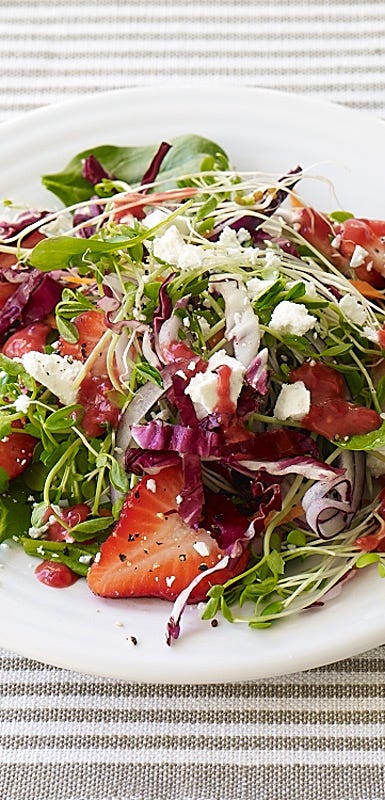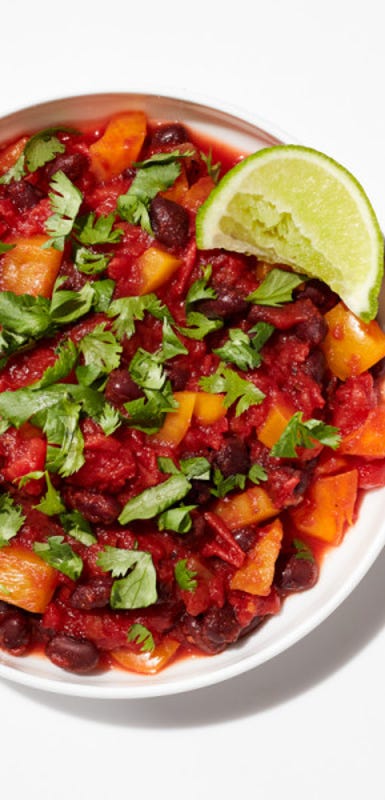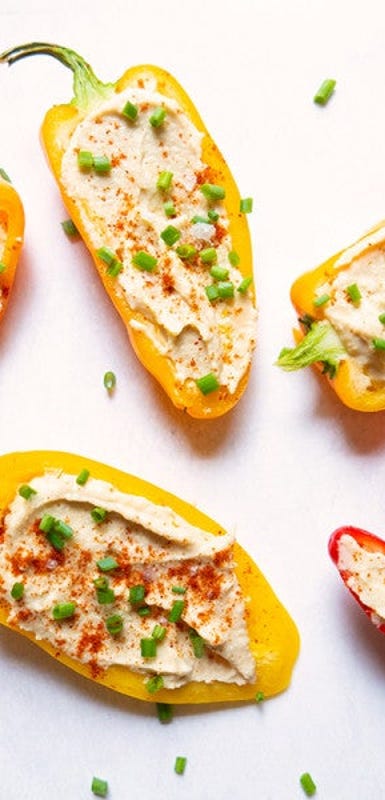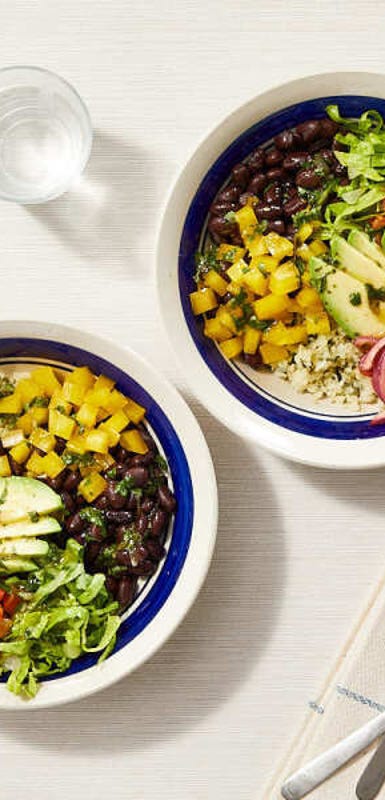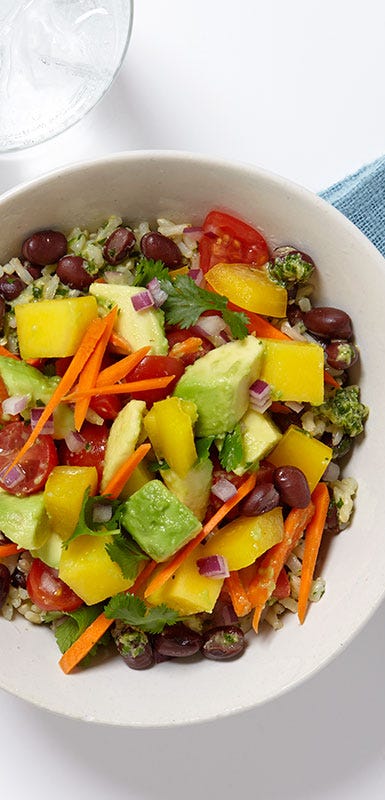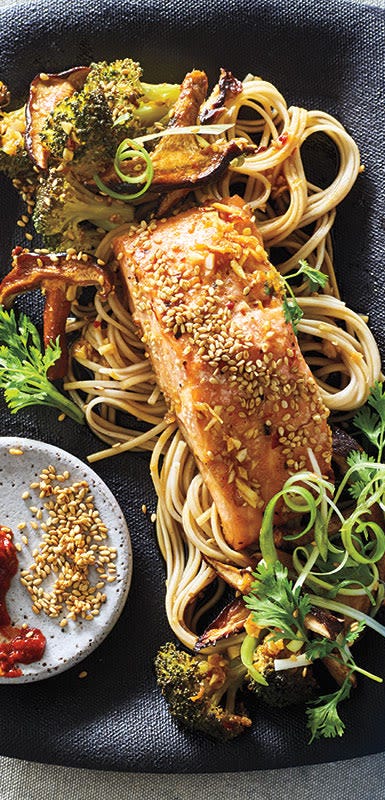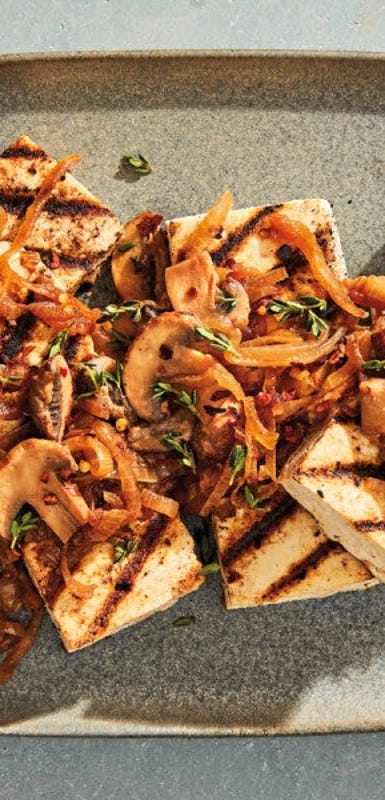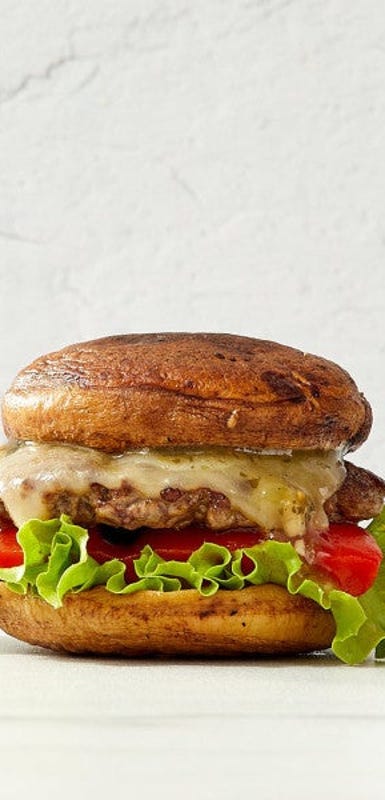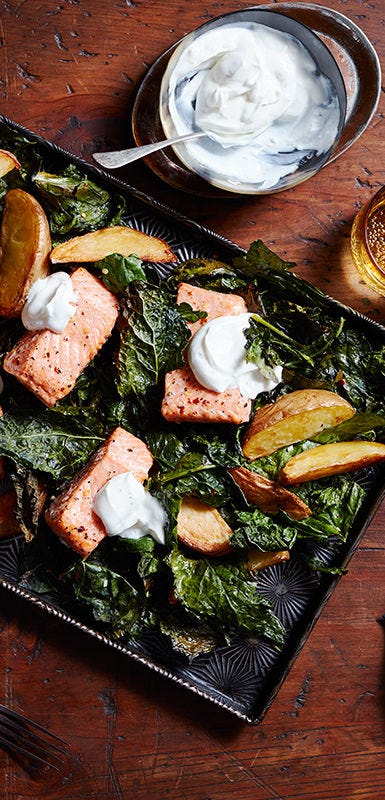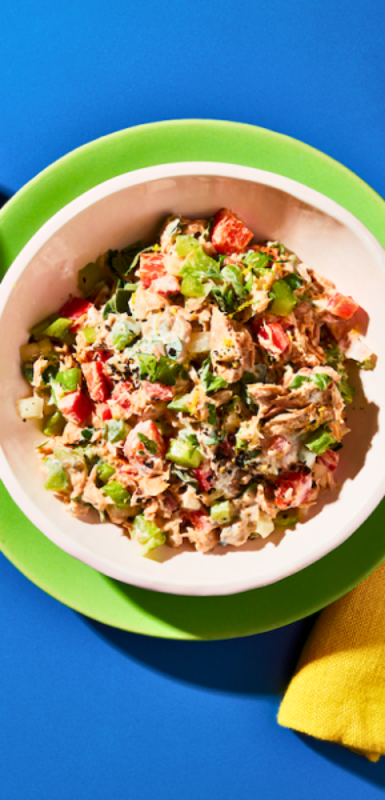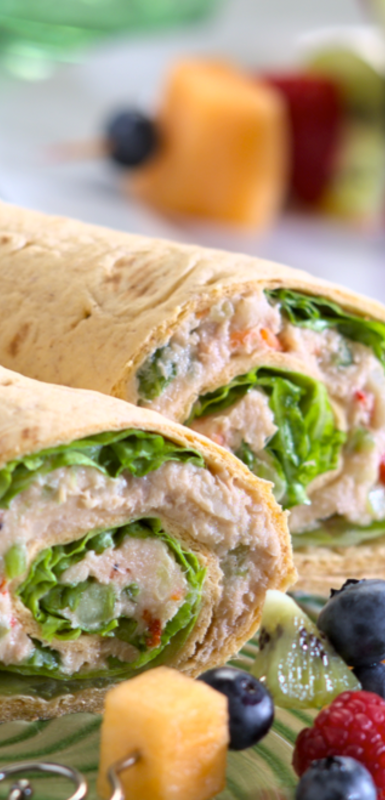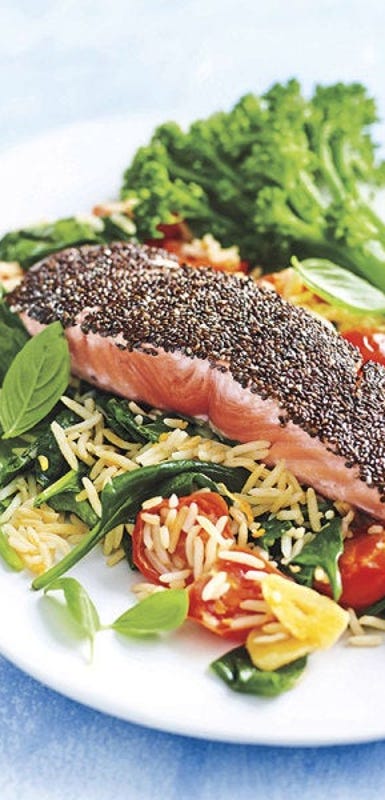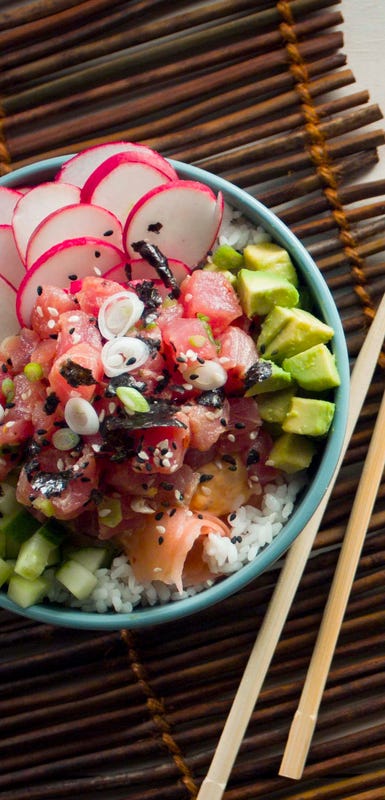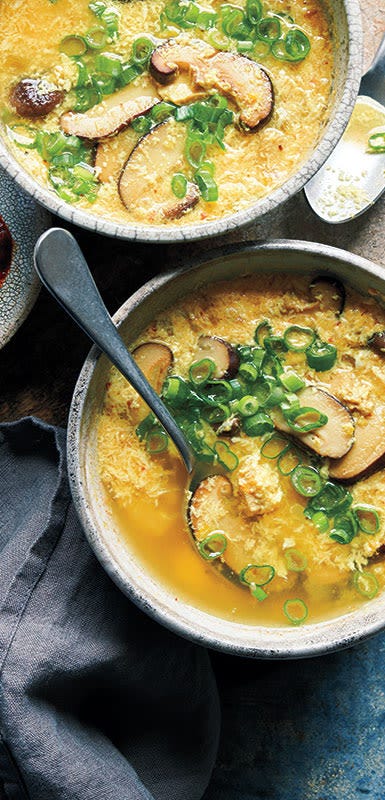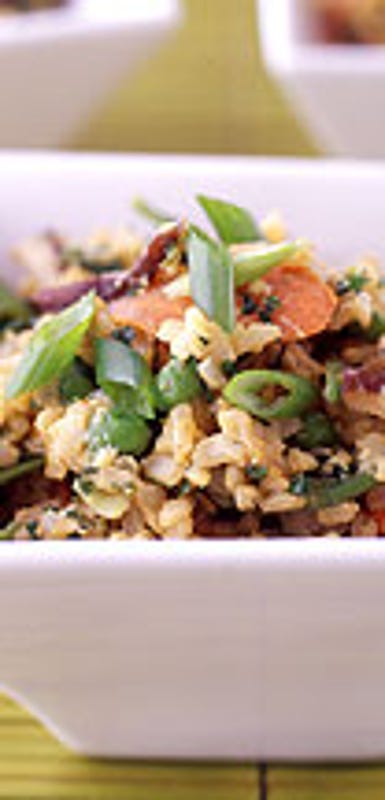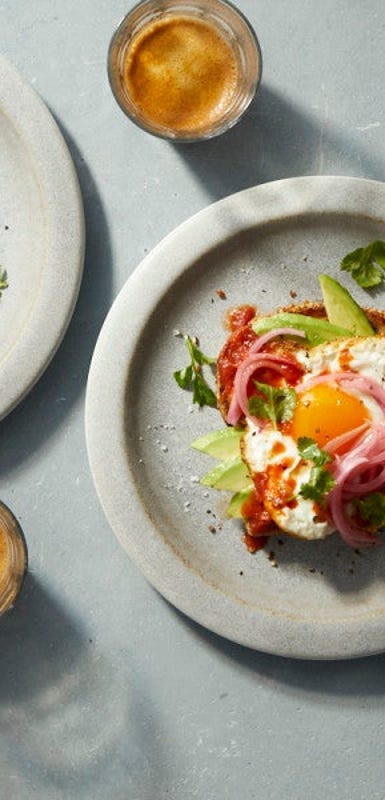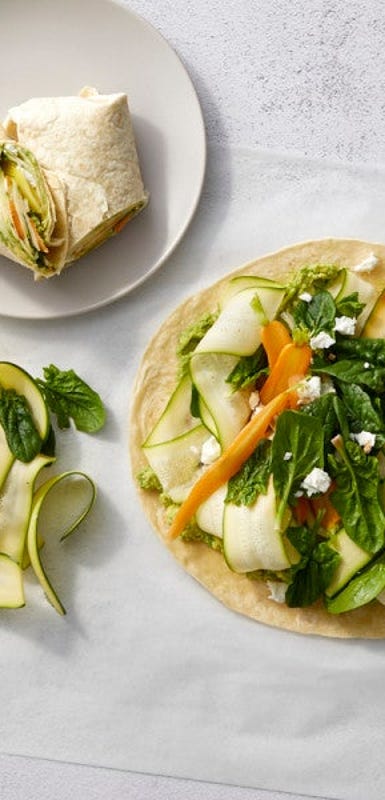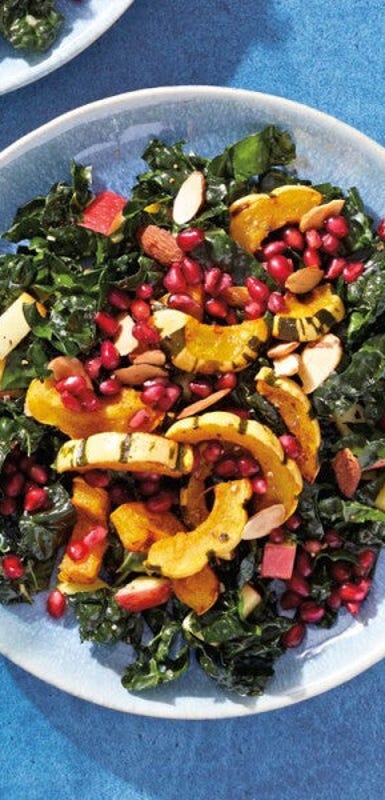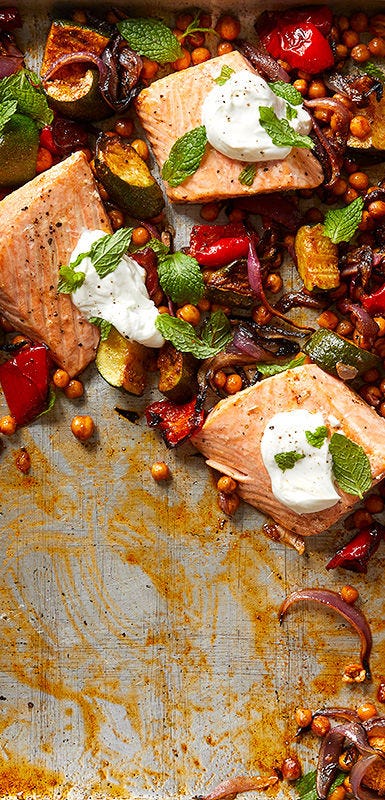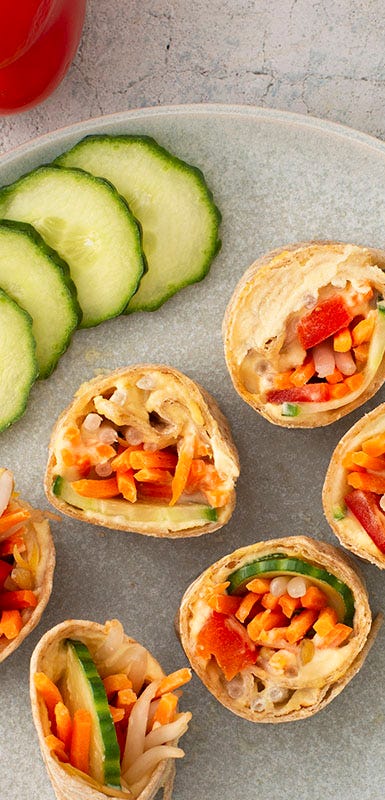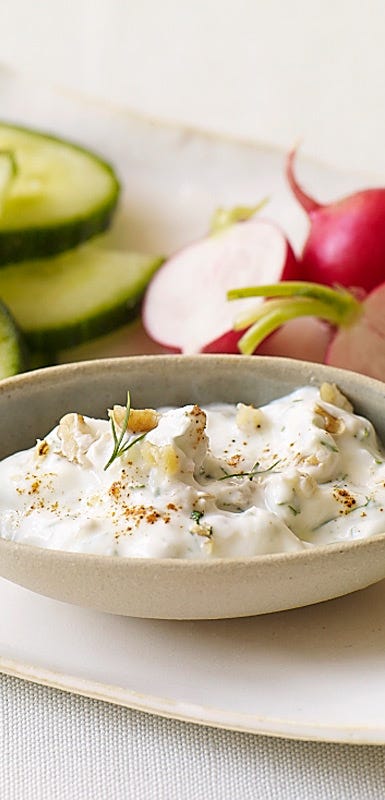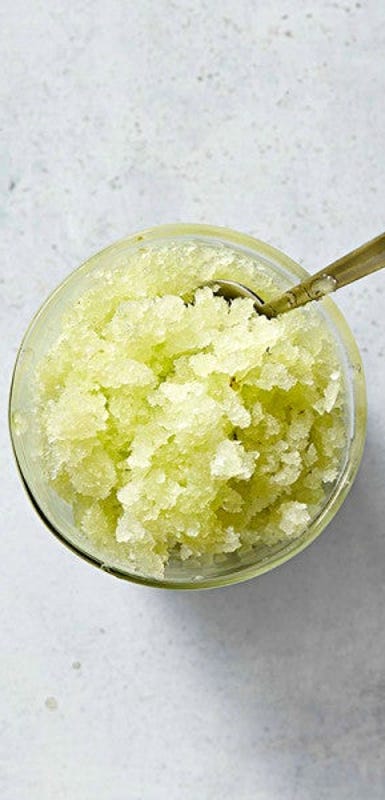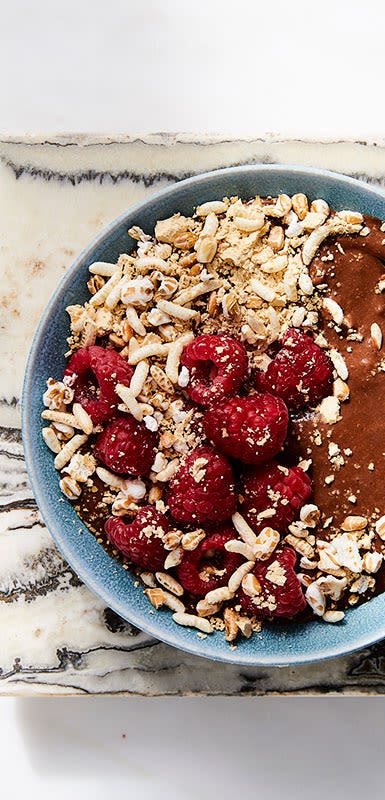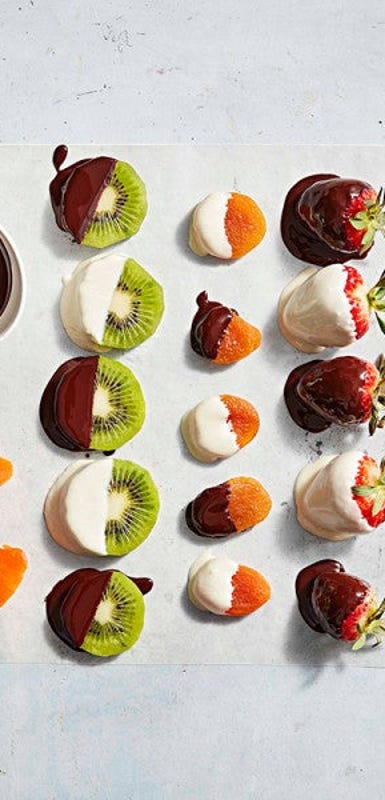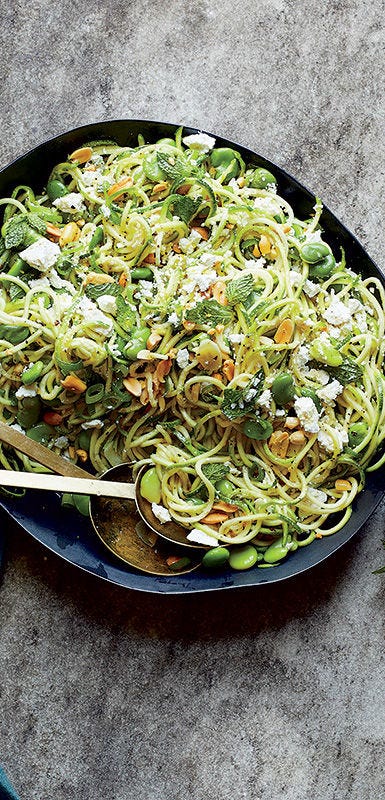Maximizing Nutrient Absorption
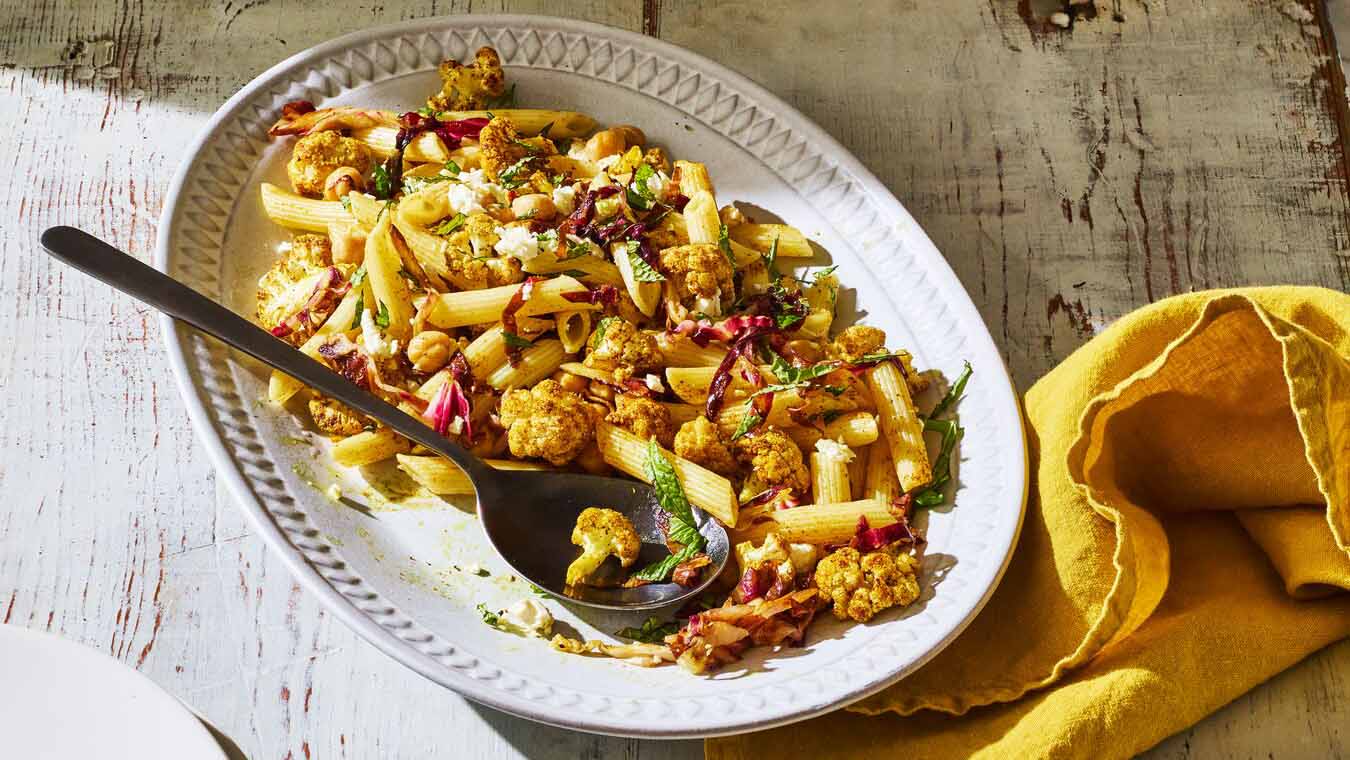

Thelma and Louise. Bonnie and Clyde. Bert and Ernie. Some things really do belong together! And in the realm of food, the same holds true. Think of foods you tend to eat together: peanut butter and jelly, milk and cookies, bacon and eggs. When we pair these foods together, what often runs through our mind is how the flavours are complementary. We don’t usually think about the nutrient interaction that occurs following digestion. Here, we are going to arm you with some facts to help increase nutrient absorption. Some nutrients are more readily available in the presence of others. And their synergistic relationships enable nutrients to become more readily absorbed when consumed together in a meal rather than eaten on their own.
Ready to get the best nutritional benefits with each bite? Start thinking of these six combos when you plan your next meal.
Vitamin C (Ascorbic Acid) + Plant-Based Iron (Non-Heme Iron)
Iron is absorbed by the body in two different forms: heme and non-heme iron. Heme iron is found in animal products such as beef, chicken, pork, fish, and shellfish. This form of iron is more readily absorbed by the body and requires little interaction from other nutrients to increase its rate of absorption. On the other hand, non-heme iron, more commonly found in plant-based sources, has a lower bioavailability, meaning that it is not as easily absorbed to have an active effect within the body. Heme iron makes up 85-90% of our dietary pool. Since the absorption of non-heme iron is heavily dependent on meal composition, it is critical to consume plant-based sources of iron with ascorbic acid, more commonly known as vitamin C, to enhance its nutrient absorption. According to an article published in the Journal of Nutrition and Metabolism, ascorbic acid forms a chemical bond to non-heme iron and thus changes the chemical structure to a form that is more readily absorbable by your intestines.
Food sources of non-heme iron include: grains, beans, lentils, nuts, seeds, dark green leafy vegetables, and fortified foods
Food sources of vitamin C include: citrus fruits such as lemons, oranges and grapefruits, strawberries, tomatoes, bell peppers, cruciferous vegetables such as broccoli, cauliflower, and cabbage
To increase non-heme iron absorption, try these pairings:
- Strawberries (vit.C) topped on a spinach salad (non-heme iron)
- Tomatoes (vit.C) added into a bean-based chili (non-heme iron)
- Tomatoes (vit.C) added to a lentil soup (non-heme iron)
- Bell pepper sticks (vit.C) paired with a hummus dip (non-heme iron)
- Cauliflower (vit.C) added into a black bean bowl (non-heme iron)
- Lime juice (vit.C) added to a brown rice bowl (non-heme iron)
To increase non-heme iron absorption, try these recipes:
Calcium + Vitamin D
Calcium and vitamin D contribute to proper muscle functionality, bone development in children, and ensure optimal bone health in adults. Calcium absorption is very much dependent on the presence of vitamin D. In fact, without the presence of vitamin D, the kidneys would excrete too much calcium leading to a diminished rate of absorption. Our bodies typically regulate vitamin and mineral levels without needing our assistance. But if your body does not absorb enough dietary calcium it will pull from reserves. The human body needs to maintain a calcium reserve in the bone to perform all its roles. In doing so, it will take the calcium from the skeletal reserves, which will consequently lead to diminished bone density, bone weakening, and bone frailty, which is particularly harmful in older adults.
Food sources of calcium include: milk, yogurt, cheese, and fortified dairy products, kale, broccoli, cabbage, collard greens, salmon, tofu, fortified cereals and juices, and almonds
Food sources of vitamin D include: egg yolk, shiitake mushrooms, fresh and canned salmon, canned tuna, mackerel, and sardines
To increase calcium absorption, try these pairings:
- Shiitake mushrooms (vit.D) and broccoli (calcium) in a bowl, salad, or side dish
- Shiitake mushrooms (vit.D) with tofu steaks (calcium)
- Shiitake mushroom (vit.D) burger buns for cheeseburger (calcium) sliders
- Salmon (vit.D) with kale (calcium)
- Tuna (vit.D) salad with a yogurt-based dressing (calcium)
- Tuna (vit.D) salad sandwich/wrap with a yogurt-based dressing (calcium)
To increase calcium absorption, try these recipes:
Vitamin D + Magnesium
Simply put, this pair is interdependent. Not only does vitamin D increase the intestinal absorption of calcium, but it also maximizes the body’s absorption of magnesium, a mineral that is an important factor in the regulation of blood sugar and blood pressure levels.
Similar to calcium, magnesium is stored in the bones. More than half of this mineral is present in the skeletal reserves, while the remainder can be found in bodily tissues. And without the presence of vitamin D, the body would need to tap into the skeletal reserves to regulate the blood magnesium levels in order to prevent deficiency. Magnesium also acts as a cofactor for the synthesis of vitamin D, which is needed for optimal bone health, immune function, and the prevention of heart disease and certain types of cancer. A magnesium deficiency will actually hinder the pathway needed for vitamin D to be synthesized and metabolized. Not only are both needed for maximization of nutrient absorption, but a deficiency in either nutrient has the potential to lead to skeletal deformities, cardiovascular disease, and metabolic syndrome.
Food sources of vitamin D include: egg yolk, shiitake mushrooms, fresh and canned salmon, canned tuna, mackerel, and sardines
Food sources of magnesium include: pumpkin seeds, almonds, peanuts, peanut butter, black and kidney beans, soybeans and soy milk, milk, yogurt, bananas, cooked spinach, Swiss chard, brown rice, oatmeal, salmon, beef, and poultry
To increase magnesium absorption and vitamin D synthesis, try these pairings:
- Salmon (vit.D) and spinach salad topped with pumpkin seeds (magnesium)
- Salmon (vit.D) coated with crushed almonds/chia seeds (magnesium) rather than breadcrumbs
- Canned tuna (vit.D) poke bowl with vegetables and brown rice (magnesium)
- Egg drop soup served with shiitake mushrooms (vit.D) and chicken (magnesium)
- Shiitake mushrooms (vit.D) served with chicken and brown rice (magnesium)
- Scrambled egg yolks (vit.D) served with a slice of bread with peanut butter and bananas (magnesium)
To increase magnesium absorption and vitamin D synthesis, try these recipes:
Fat-Soluble Vitamins (A, D, E, and K) + Unsaturated Fat
There are two classes of vitamins: fat soluble and water soluble. Vitamins A, D, E, and K are fat-soluble vitamins, meaning that their rate of absorption is further maximized in the presence of fats and oils. Vitamin A supports vision, vitamin D aids with bone mineralization, vitamin E protects against oxidative damage from free radicals, and vitamin K can prevent both blood clotting and calcium buildup in the blood.
When we speak of fats, we recommend the pairing of vitamins A, D, E, and K with unsaturated fatty acids for a heart-healthy pattern of eating. Mono and poly-unsaturated fatty acids can lower the “bad” LDL cholesterol and reduce both inflammation and arterial plaque buildup to stabilize blood pressure. By pairing these fat-soluble vitamins with unsaturated fats, there can be improvements in not only vitamin absorption but also in cardiovascular protection.
Food sources of vitamins A, D, E, and K include: vitamin A (dairy products, sweet potato, green leafy vegetables, carrots, cantaloupe, and black-eyed peas), vitamin D (egg yolk, shiitake mushrooms, fresh and canned salmon, canned tuna, mackerel, and sardines), vitamin E (kiwi, mango, spinach, broccoli, sunflower seeds and oil, and wheat germ oil), and vitamin K (kale, liver, spinach, parsley, egg yolks, and butter)
Food sources of unsaturated fat include: salmon, mackerel, avocado, avocado oil, canola oil, sunflower, safflower, corn, and flaxseed oils, walnuts, almonds, nut butters, pumpkin, sesame, and flax seeds
To increase vitamin A, D, E, and K absorption, try these pairings:
- Avocado (unsaturated fat) toast with eggs (vit.D, K)
- Avocado (unsaturated fat) and kale (vit.K) salad
- Salmon (unsaturated fat) with roasted vegetables (vit.A, D, E, K)
- Nuts and seeds (unsaturated fat) added to full fat Greek yogurt (vit.A)
- Hummus (unsaturated fat) paired with carrots sticks (vit.A)
- Nut dip (unsaturated fat) made with full fat Greek yogurt (vit.A)
To increase vitamin A, D, E, and K absorption, try these recipes:
Catechins + Vitamin C (Ascorbic Acid)
Catechins are a type of flavanol found in plant-based foods and beverages. If you’re an avid tea drinker, you may have heard of this compound as it is found highly concentrated in brewed black and green teas. Catechin-rich foods and beverages provide a variety of potential health benefits such as neutralizing free radicals to protect against certain types of cancers and heart disease, aiding in blood vessel dilation, and inhibiting production of harmful gut bacteria while supporting the growth of healthy gut bacteria. When consumed on their own, catechins are unstable in non-acidic environments such as our intestines. This leads to their degradation and low bioavailability.
This is where the immune strengthening partner, vitamin C, comes into play. Vitamin C aids in the acidification of the intestinal walls, thus decreasing the rate of degradation and enhancing the rate of absorption of the catechins. Although there is a vast list of vitamin C-containing foods, citrus fruits and citrus juices have the greatest stabilizing effect on catechins. When catechins are consumed with lemon juice, 80% of the compounds remain intact and do not undergo degradation in the intestines. Try a squeeze or two of citrus fruits with catechin-containing foods and beverages.
Food sources of catechins include: brewed green and black tea, red wine, strawberries, blueberries, blackberries, black grapes, black plums, broad beans, fava beans, dark chocolate, cacao beans, and powdered cocoa mix
Food sources of vitamin C include: citrus fruits such as lemons, oranges, kiwi, and grapefruits, strawberries, tomatoes, bell peppers, cruciferous vegetables such as broccoli, Brussels sprouts, cauliflower, and cabbage
To increase catechin absorption, try these pairings:
- Add lemon juice (vit.C) to brewed green or black tea (catechins)
- Add strawberry slices (vit.C) to a green-tea smoothie (catechins)
- Squeeze lemon juice (vit.C) onto Brussels sprouts (catechins)
- Make a sangria with strawberry, orange, and kiwi slices (vit.C) and red wine (catechins)
- Coat strawberry, orange, and kiwi slices (vit.C) with dark chocolate (catechins)
- Combine tomatoes (vit.C) with fava beans (catechins) with a lemon-based dressing (vit.C) for an easy side dish/salad
To increase catechin absorption, try these recipes:
Curcumin + Piperine
When you see the words curcumin and piperine, think turmeric and black pepper. Turmeric, also known as the golden spice, is most commonly used as a culinary spice to add colour and enhance the flavours of food. However, there is more to this herb than just taste. The key compounds in turmeric are called curcuminoids, with the most active compound being curcumin. This active compound is responsible for turmeric’s yellow colour. Curcumin is most well-known for its anti-inflammatory, antibacterial, and antifungal properties that are particularly important for the prevention of inflammation, arthritis, and dysfunctionalities of the stomach, liver, and gallbladder. However, consuming curcumin on its own does not provide significant health benefits due to its low rate of absorption, rapid metabolism and elimination.
The bioavailability and health benefits of curcumin are significantly enhanced in the presence of piperine, the key active ingredient most commonly found in black pepper, by up to 2000%. In fact, all that is needed to maximize the rate of absorption of curcumin is 1/20 of a teaspoon or more of black pepper. Piperine, responsible for the strong taste of black pepper, is used for nausea and headache relief, aids with poor digestion, and like curcumin, has anti-inflammatory properties. To add, curcumin is a fat-soluble compound, meaning that it requires sources of fat for absorption into the bloodstream. To further maximize absorption, try pairing curcumin-based food sources with dietary sources of unsaturated fat.
Food sources of curcumin include: turmeric, curry powder, curry dishes, and mango ginger
Food sources of piperine include: black pepper
To increase curcumin absorption, try these pairings:
- Add black pepper (piperine) and turmeric (curcumin) into salad dressings
- Sprinkle black pepper (piperine) on a turmeric latte (curcumin)
- Add black pepper (piperine) to curry dishes (curcumin)
- Season roasted/grilled veggies, scrambled eggs, soups, or rice with black pepper (piperine) and turmeric (curcumin)
- Add black pepper (piperine) to a turmeric broth (curcumin)
- Create a seasoning blend with ground coriander, cumin, paprika, cayenne pepper, black pepper (piperine), and turmeric (curcumin)

